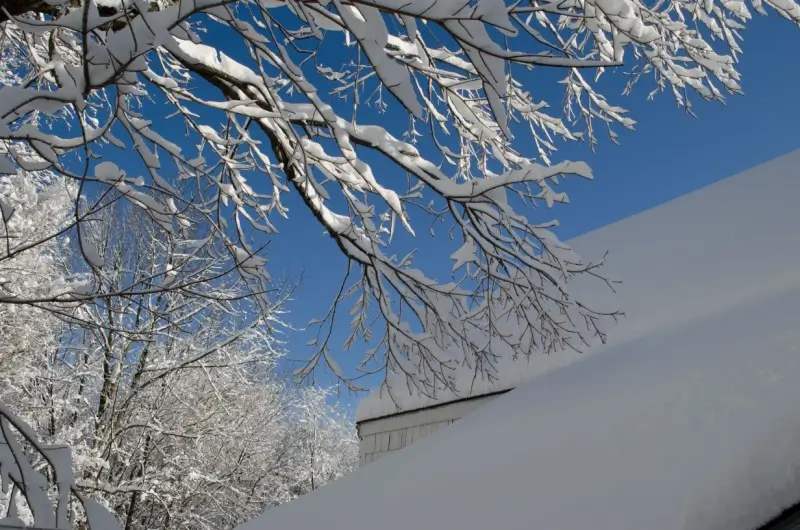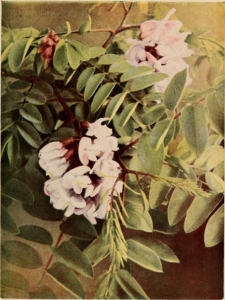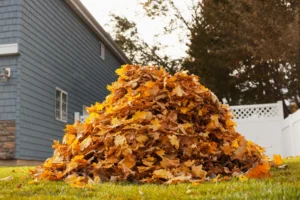A Step-by-Step Guide by an Expert
As a certified arborist with over a decade of experience, I’ve seen countless trees suffer unnecessary damage during winter because of heavy snow accumulation. Knowing how to remove snow from trees effectively and safely is crucial for protecting your landscaping investment and ensuring tree health during harsh weather. In this article, I’ll guide you through the best practices, share insights from experts, and reference research to help you tackle this winter challenge with confidence.
Why Removing Snow from Trees is Crucial
Removing snow from trees is essential to prevent broken branches, structural damage, and long-term health issues. Snow weighs significantly more than it appears, especially when wet, and this extra load can cause branches to bend, crack, or break. Trees already weakened by disease or improper pruning are especially susceptible to damage. A single branch snapping can set off a chain reaction, leading to structural instability and potentially endangering nearby property or people.
The University of Vermont’s Extension Department highlights that early intervention during snowstorms can minimize long-term damage to trees. According to their research, trees with intact canopies are better equipped to recover from winter storms compared to those with substantial branch loss. These findings underline the importance of prompt action when snow accumulates on your trees.
Understanding the Impact of Snow on Trees
Snow impacts trees differently depending on its type, amount, and how it accumulates. Light, fluffy snow usually poses minimal risk, while wet, heavy snow can weigh down branches significantly. Evergreen trees like pines and spruces are more vulnerable since their needles trap snow, increasing the load. Deciduous trees, which shed leaves, are less likely to accumulate snow but can still suffer damage if their branches are weak.
Dr. John Ball, a professor of forestry at South Dakota State University, explains, “Heavy snow loads can bend young or thin branches to their breaking point. The key is to gently relieve the weight without causing additional stress or injury to the tree.” This insight reinforces the importance of proper technique when removing snow.
Step-by-Step Guide to Remove Snow from Trees
1. Assess the Situation
Before you take any action, inspect the tree for potential hazards. Look for:
- Heavily laden branches close to snapping.
- Damaged or cracked limbs.
- Branches near power lines or structures.
If any of these issues are present, proceed with extreme caution or contact a professional arborist.
2. Use Appropriate Tools
Equip yourself with the right tools to minimize damage and ensure safety:
- Soft-bristled broom: Ideal for gently sweeping snow from branches.
- Telescopic pole: Helps reach higher branches without climbing.
- Ladder (if necessary): Use a sturdy, non-slip ladder for accessibility, ensuring a stable base.
- Protective gear: Gloves, goggles, and sturdy boots for personal safety.
3. Start from the Top
Work from the top of the tree downward. This prevents snow from falling onto branches below, avoiding additional weight and potential breakage.
4. Shake Gently
For smaller, flexible branches, gently shake the branch to dislodge snow. Avoid aggressive movements, as they can stress the branch and cause it to snap.
5. Brush Lightly
Use a soft-bristled broom or telescopic pole to brush snow away. Sweep in a downward motion to mimic the natural flow of snow off the tree.
6. Do Not Remove Ice
If branches are coated with ice, do not attempt to remove it. Ice removal can cause severe damage to bark and underlying tissues. Instead, let the ice melt naturally over time.
7. Monitor for Damage
After clearing snow, inspect the tree for signs of damage, such as cracks or broken limbs. Prune damaged branches to prevent further stress and reduce the risk of pest infestations.
Common Mistakes to Avoid
1. Using Forceful Methods
Avoid using shovels, hard-bristled brushes, or sharp tools, as these can harm the tree’s bark or underlying tissues.
2. Climbing Trees
Climbing a snow-laden tree is dangerous and can destabilize already stressed branches. Always use tools designed to extend your reach.
3. Ignoring Structural Damage
Ignoring damaged branches can lead to further weakening and even tree death. Promptly address any visible issues.
Preventing Snow Damage in the Future
1. Regular Pruning
Regularly prune weak, dead, or overextended branches to minimize potential breakage. Focus on shaping the tree to evenly distribute weight.
2. Install Supports
For young or vulnerable trees, consider installing supports or stakes to stabilize them during heavy snowfall.
3. Wrap Young Trees
Use burlap or other protective coverings to shield young trees from heavy snow accumulation and wind damage.
4. Plant Resilient Species
Choose tree species that are better suited to your region’s winter conditions. For instance, trees with strong wood like oak and hickory are less likely to suffer winter damage.
Expert Tips for Long-Term Tree Health
- Fertilize Appropriately: Healthy trees are better equipped to recover from winter stress. Apply fertilizer in the fall to strengthen roots.
- Water During Dry Winters: If snowfall is minimal, ensure trees receive adequate water to prevent dehydration.
- Mulch Around the Base: Mulching helps insulate roots and regulate soil moisture during freezing conditions.
When to Call a Professional Arborist
Sometimes, snow removal requires expertise beyond DIY efforts. Call a professional if:
- Large branches are at risk of falling.
- Trees are near power lines or other hazards.
- The tree’s structure appears compromised.
Professional arborists have the training and equipment to safely remove snow and address structural issues, ensuring the tree’s long-term health.
Conclusion
Removing snow from trees is a vital task to maintain their health and prevent damage during winter. By following this guide, using the right tools, and employing gentle techniques, you can protect your trees from winter’s harsh effects. Remember, prevention is just as important as intervention. With regular maintenance and care, your trees can thrive year-round, even in snowy conditions.
For additional information and expert insights, consider these resources:
- University of Vermont Extension: https://www.uvm.edu/extension
- Arbor Day Foundation: https://www.arborday.org
- South Dakota State University Forestry Department: https://www.sdstate.edu






